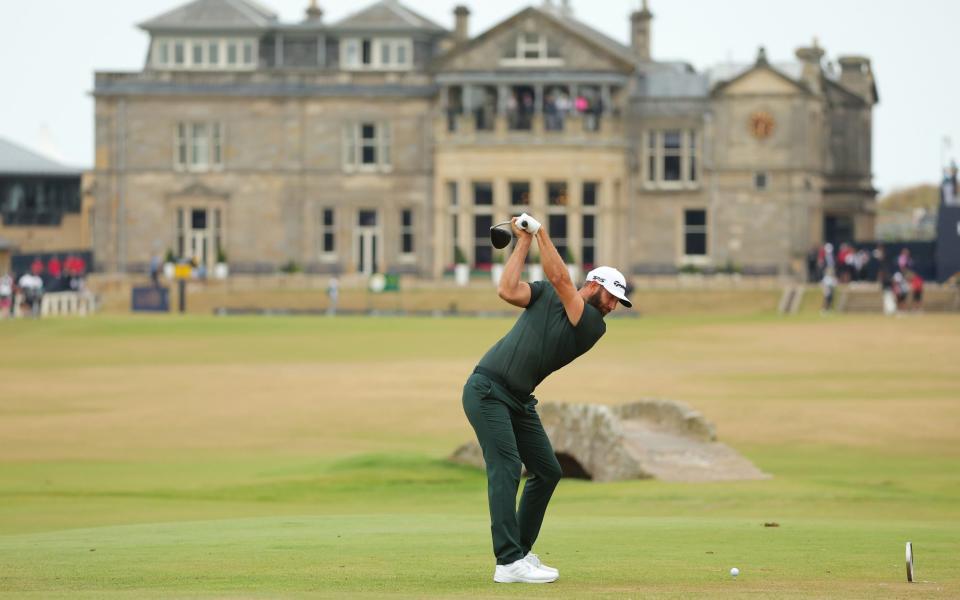'A solution in search of a problem" - Titleist hit back at R&A's plan to rein in golf's big-hitters

The R&A and US Golf Association have been warned by the game’s predominant ball-maker Titleist that they will be turning back the game 30 years if they go through with their proposals to curtail the extreme length the modern pros are hitting it.
Telegraph Sport exclusively revealed on Monday that, after years of study, reports and consultation, the governing bodies would finally announce their solution to solve “the distance issue” and end a debate that has been raging for decades.
And on Tuesday they duly revealed plans to introduce a regulation that will allow Tours and individual tournaments to employ a “rolled back” ball that on average will travel 15 yards shorter than now.
The “Modern Local Rule” is intended only for elite players and will not affect the recreational golfer and that means there will be an effective bifurcation, meaning that for the first time there will be different equipment rules within the sport.
Under proposals sent out to the equipment makers on Monday, a ball struck at a laboratory-controlled swing speed of 127mph - up from 120mph - must not travel more than 320 yards.
A six-month period of consultation will be held, with the industry to voice the concerns and they will inevitably be plentiful, but the R&A and USGA made it clear that they are determined to implement this dramatic overhaul from Jan 1, 2026.
Titleist, the American company which commands approximately 50 percent of the entire market and which provides balls to almost three-quarters of the players on the PGA Tour, did not attempt to conceal its disdain for what it called “a solution in search of a problem” and “detrimental to golf’s long-term well-being”.
“Under the proposed guidelines, events that adopt this MLR would require players to use a substantially shorter golf ball, similar in distance to what was available in the 1990s,” it said in a statement.
“The performance changes of any rolled-back ball would impact every shot in the round. Players would also be required to adapt to changes in equipment with some players disadvantaged over others by this disruption.
“Golf ball bifurcation would invite confusion as to what level of competition would use the MLR products and how to effectively manage and officiate. This bifurcation would divide golf between elite and recreational play, add confusion, and break the linkage that is part of the game’s enduring fabric.”
The PGA Tour was rather more coy in its response, but it was notable that Sawgrass HQ chose to declare that “it remains committed to ensuring any future solutions identified benefit the game as a whole, without negatively impacting the Tour, its players or our fans’ enjoyment of our sport".
The Tour will recognise that, ostensibly, it is under no obligation to utilise the MLR, but with the lawyers ready to swoop, this is where the governing bodies have apparently been clever.
In 2021, Masters chairman Fred Ridley said a "Masters ball" would be a last resort in the fight to limit hitting distances, with Augusta’s revered 13th extended by 35 yards for next month’s event. The inference was plain and with the R&A overseeing the Open and the USGA in charge of the US Open they instantly have three of the four majors on side.
It is almost unthinkable that the US PGA Championship - albeit overseen by the reluctant PGA of America - would not follow suit and how could the PGA Tour possibly play by different rules to the majors, to the championships by which careers are still ultimately defined?
The DP World Tour declined to comment on Tuesday, while the LPGA Tour indicated that it has a dilemma on a circuit where distance is not so much an issue.
And then there is LIV Golf. As outliers and disruptors, it will be intriguing to see the position taken by the Saudi-funded circuit in a saga that still has some way to go.
Mike Whan, the USGA chief executive, acknowledged that in the midst of one golfing civil war, another ugly front will open. But he and Slumbers contend this is necessary to "break the ever-increasing cycle of hitting distance" that has led to courses being continually lengthened and classic layouts deemed obsolete, with ever-escalating environmental concerns as as well as the growing conviction that the sport is becoming one-dimensional.
"This won't be easy,’ this won’t be fun. Governance is hard and people don't like change,” Whan said, before predicting the dissension from the pros, themselves. “"They're 25 years old, prime of their career, hitting the ball a long way, don't mess with that formula. I can't argue with them, I'm not saying they're wrong, but I also don't think anybody's asking them to think about what the game's going to be like in 30 years.”

